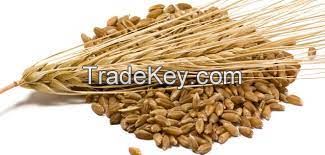Description
Barley, a member of the prestigious ancient grains club, is one of
the healthiest crops around, along with other health-craze foods
like quinoa and rye. It is the fourth most cultivated crop in the
world for its extensive uses, from animal food to algicide. Despite
these honours, few gardeners consider it a top contender on their
backyard wish-list. With all its benefits, barley shouldnt be
reserved for committed farmers and the uber-healthy heres how you
can get started too
The benefits of barley
Barley is one of the most consumed ancient grains. Its affordable,
widely available and great for your health what more could you ask
for? Most forms of barley, from flour to flakes, use the whole
grain, which is an impressive source of essential nutrients and
fibre. With all its iterations, it can be easily added to any diet
as a replacement for commonly refined grains, improving overall
health and wellness
Beyond the health benefits, barley has had tons of uses throughout
history, and still does today. Ancient Egyptians used barley to
make bread, and it was reserved as a special food for gladiators in
Ancient Greece. It was used as a currency for a short period, and
King Edward the First used barleycorns as a unit of measurement. It
became the basis for shoe size measurement in England, which it
still is today (shoe size *1 would be equivalent to *1
barleycorns). In modern applications, barley is largely used as
animal fodder. It is also used in the production of vinegar, and as
a caffeine-free replacement for coffee. However, its most popular
use among gardeners has to be malting in home-brewed alcohol! The
grain contains fermentation-friendly enzymes that break down
starches to make beer and whisky. Barley is the ideal crop for avid
home-brewers looking to grow a grain with endless versatility.
Planting
Barley grows best in cool, dry conditions. There are hulled,
hull-less and malting varieties your choice will depend on your
intended use. Be sure to check the variety you have as the ideal
planting time will differ some are best planted in autumn, others
in spring. Plant in full-sun in well-draining soil. Plant in rows
or simply scatter the seeds evenly across your prepared soil. Rake
the soil to lightly cover the seeds and give them more soil
contact. Barley can be sown in pots but will not produce much yield
this way. Water thoroughly after planting and keep the soil moist
during the initial growth period. Keep the beds free of weeds and
try to protect early shoots from opportunistic birds. Once
established, barley plants are adaptable and require minimal
attention and care. Once the plants turn from green to a tan
colour, limit watering to prevent rot.
Harvesting
Your barley will be ready for harvest about *0 *0 days after
planting. Before removal, test the kernels once the seed heads have
formed and turned golden brown. A peeled kernel should be hard and
you shouldnt be able to dent it with your fingernail. Before
cutting, cover your arms as the plant can cause skin irritation.
Cut down to the base and lay the stalks in bundles. They can be
left in the sun for a few days to dry for a further period, or
immediately tied for threshing if they are ready. The next step
will require a bit of muscle. There are two methods home gardeners
can use to separate the grain from the stalk: either place the
bundle between two wooden sticks (like broom handles) and hit them
against the ground on a plastic sheet to release the grain, or hit
the bundle, head-side down, against the walls of a large bucket or
bin.
The collected grain can be stored in the freezer for over a year or
kept in an airtight container in a cool place for up to six months.
Ensure the grains are completely dry before storing as any
remaining moisture will cause the grain to spoil
